Your Cart is Empty
FREE DELIVERY ON ORDERS OVER £50.00 - TO MOST UK POSTCODES
FREE DELIVERY ON ORDERS OVER £50.00 - TO MOST UK POSTCODES

FREE DELIVERY ON ORDERS OVER £50.00 - TO MOST UK POSTCODES
FREE DELIVERY ON ORDERS OVER £50.00 - TO MOST UK POSTCODES
by Ellie Jakeman February 18, 2021
One of the most important decisions an artist can make is regarding the surface from which their artwork will spring forth! You need to decide primarily what paper will suit your type of work, techniques and project. Size is a huge consideration but you also need to consider surface texture, longevity of your artwork (archival), and weight!
For watercolour artists and mixed media artists there are many ‘watercolour’ paper brands on the market, which can be very confusing. Not all of them will be suited to the way you work, or your style, especially if you use a lot of water-based techniques or a lot of fluid and mixed media, such as water-based or acrylic inks, or high-flow paints. Hopefully the information below will help give clarity to your choices.
Stretching paper is one way in which you can guarantee your work will stay flat and straight whilst you are working on it, whilst it is drying, and after your masterpiece is finished!
Things to know before buying watercolour paper:
Watercolour paper is made from either cotton rag, cotton linters, wood pulp, or a combination of cotton and other cellulose fibres, such as bamboo. The most expensive watercolour papers are made from 100% cotton rag and provide the best results in terms of brightness of hues and longevity (acid-free), and are robust enough to take most, if not all, of the watercolour painting techniques, such as wet-on-wet, scraping and scratching techniques and heavy paint washes. They are usually acid-free, archival and are the professionals' choice. Beginners, and intermediates who are just starting out and are on a tight budget, could use a mixture of cotton and wood pulp at a lesser price.
Watercolour papers can be either handmade (with deckled edges), machine-made or mould-made. Some machine made paper can replicate the deckled edge found in hand made papers. Usually, artists work on the side of the paper where you can read the watermark or where the paper is the smoothest for hot-pressed paper.
Hot-Pressed: this is the smoothest of the watercolour papers and an excellent surface for artists and illustrators alike. This paper surface is suitable for fine detail and flat finishes as it is completely texture free.

The thickness of watercolour paper is indicated by it's weight: it is measured either in grams per square metre, often abbreviated to (gsm), or pounds per ream, often seen as (lb). It comes in many weights, the heavier the weight of paper the more scraping, and water and wash techniques can be used.
The standard machine weights that may need stretching are; 90lb (190gsm), 95lb (200gsm) and 140lb (300gsm).
The standard machine weights that do not need stretching as a rule are; 260lb (356gsm) 300lb (638gsm).
Handmade papers are usually the heaviest of the watercolour papers, and are robust and the most durable.
Stretching watercolour paper is a technique used to prevent your paper warping or cockling. Unstretched paper that is less than 200lb or 425gsm may move and create hills and valleys while you are working on it especially if you use a lot of wet-on-wet or wash techniques, resulting in your pigments pooling in one place.

Have all equipment ready and prepared before you start. The dimensions of your paper must be at least 3 inches or 10cm smaller than the board you are stretching onto, to accommodate the width of the gummed paper tape. Have your clean, grease free board near your water tray/bath. Your paper will be fragile when wet and will stretch when carried, this applies to larger size papers. Where possible, have enough room to walk around the table or at least be able to turn your stretching board around.
Remember when planning your painting that you may want to cut off the gummed paper strip left on your paper so aim to either leave a good size border around your work, or leave the gummed paper strip on and this will be covered by a mount frame when you come to frame your work.
The biggest tip would be to stretch several pieces of paper at a time on several boards, just in case of failure and to save time.
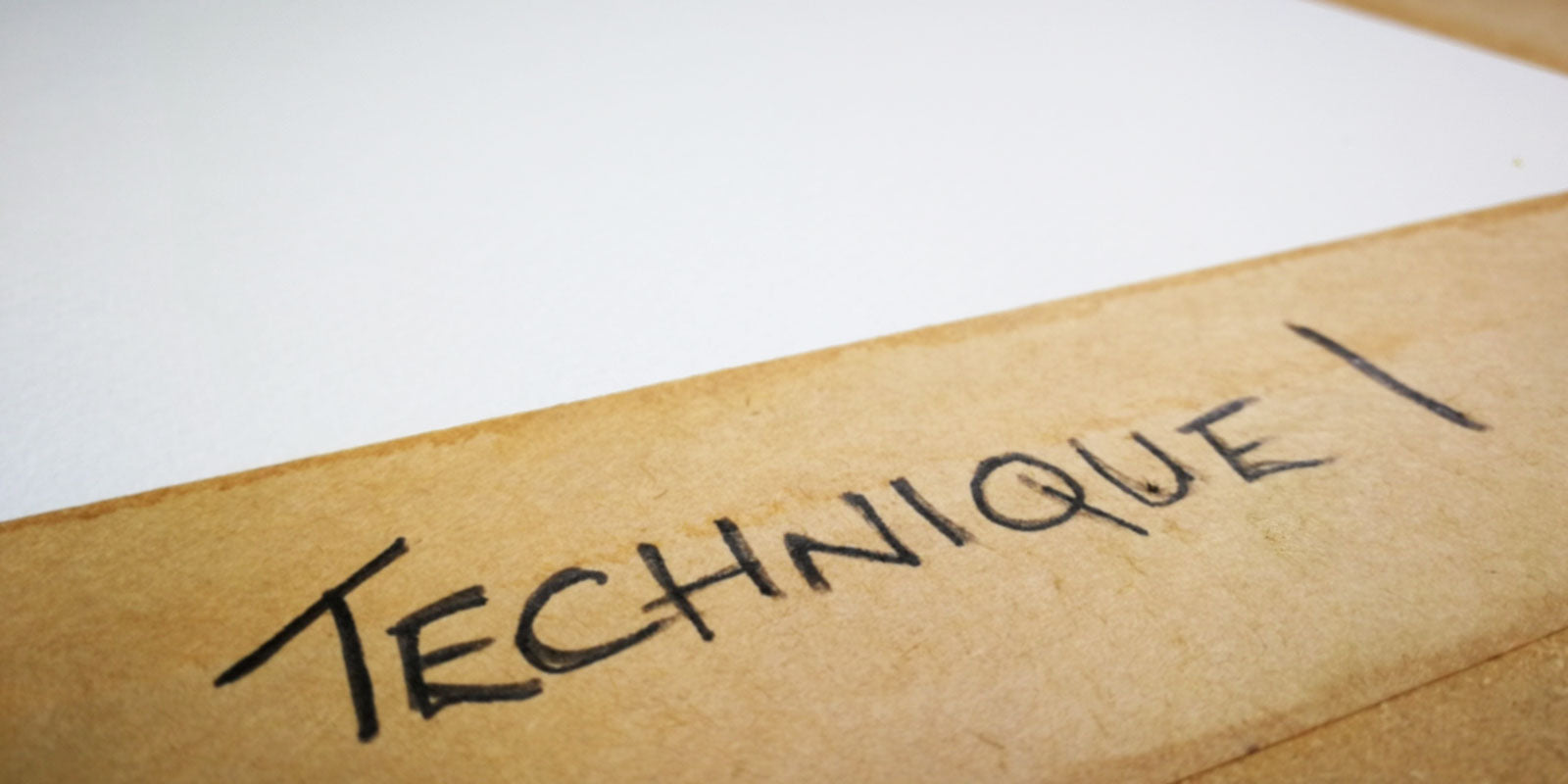
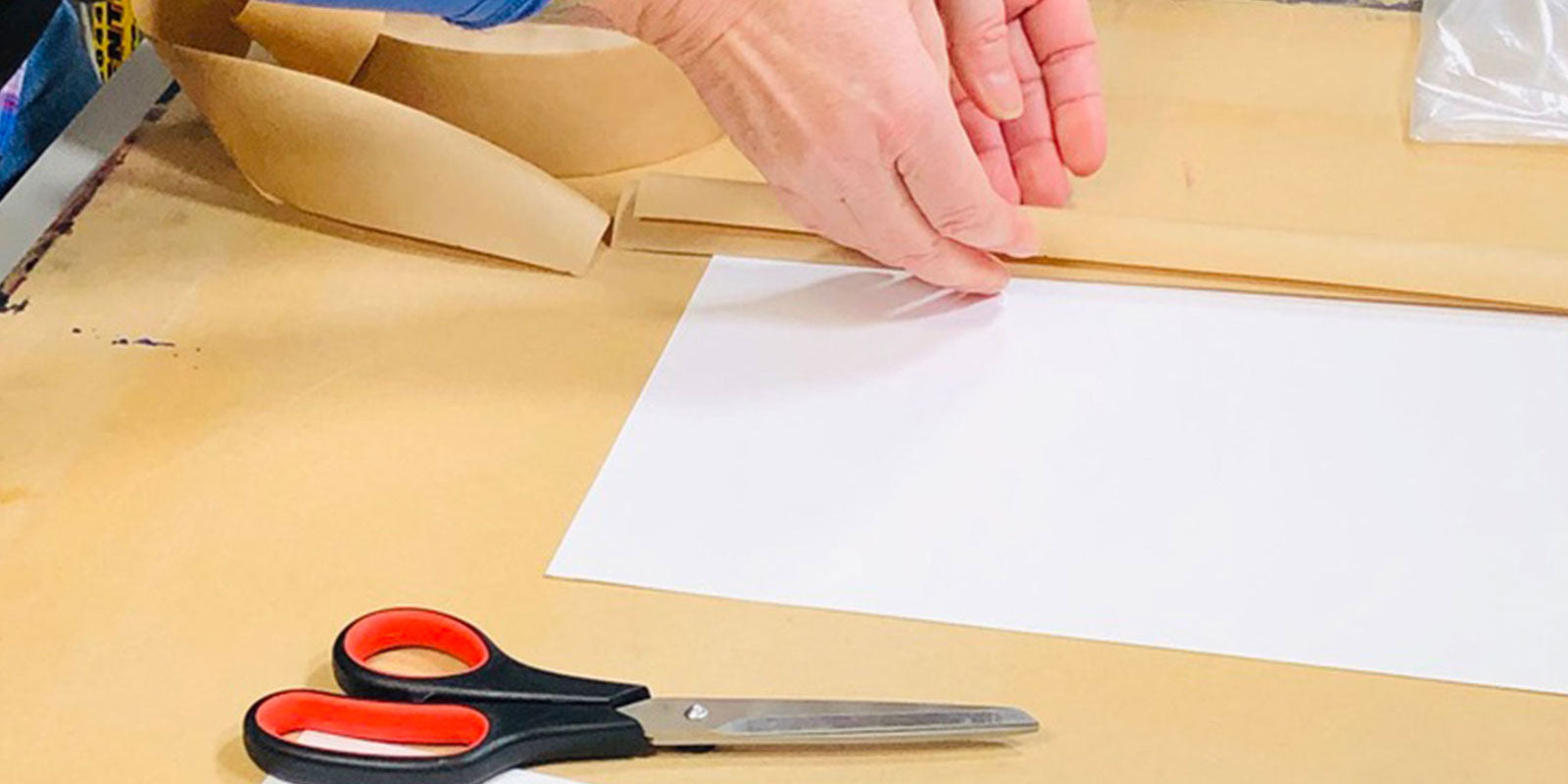

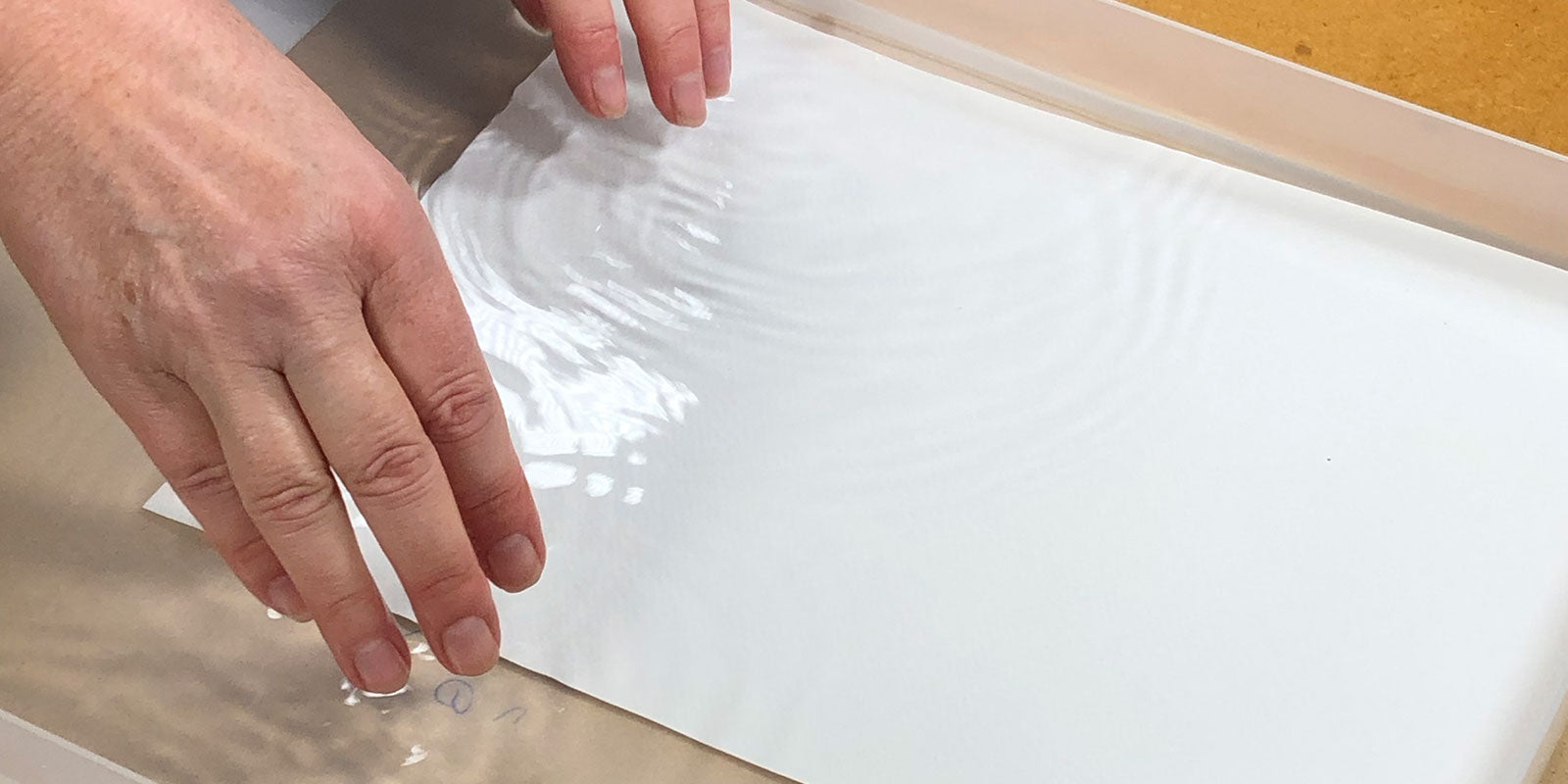
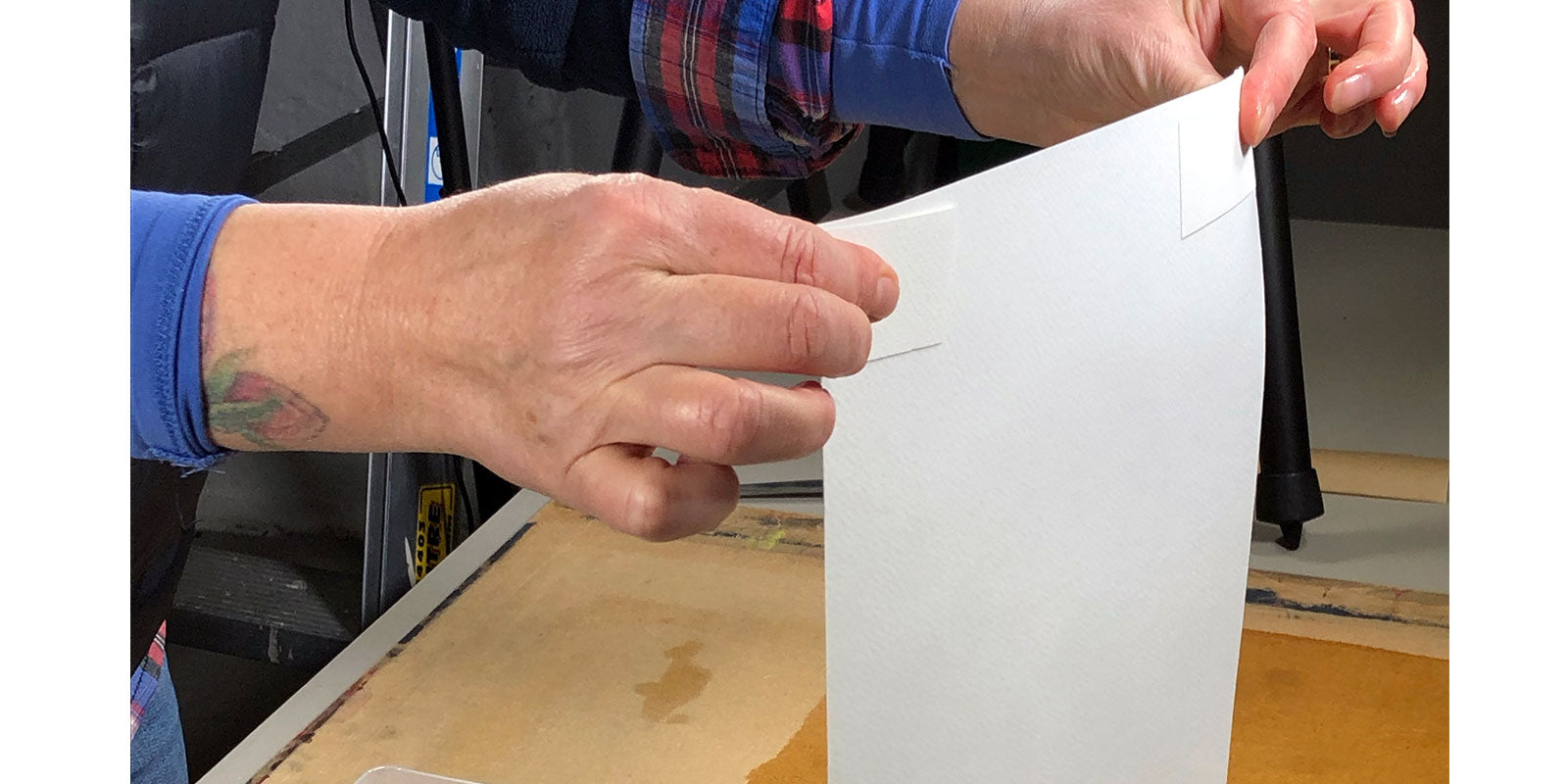










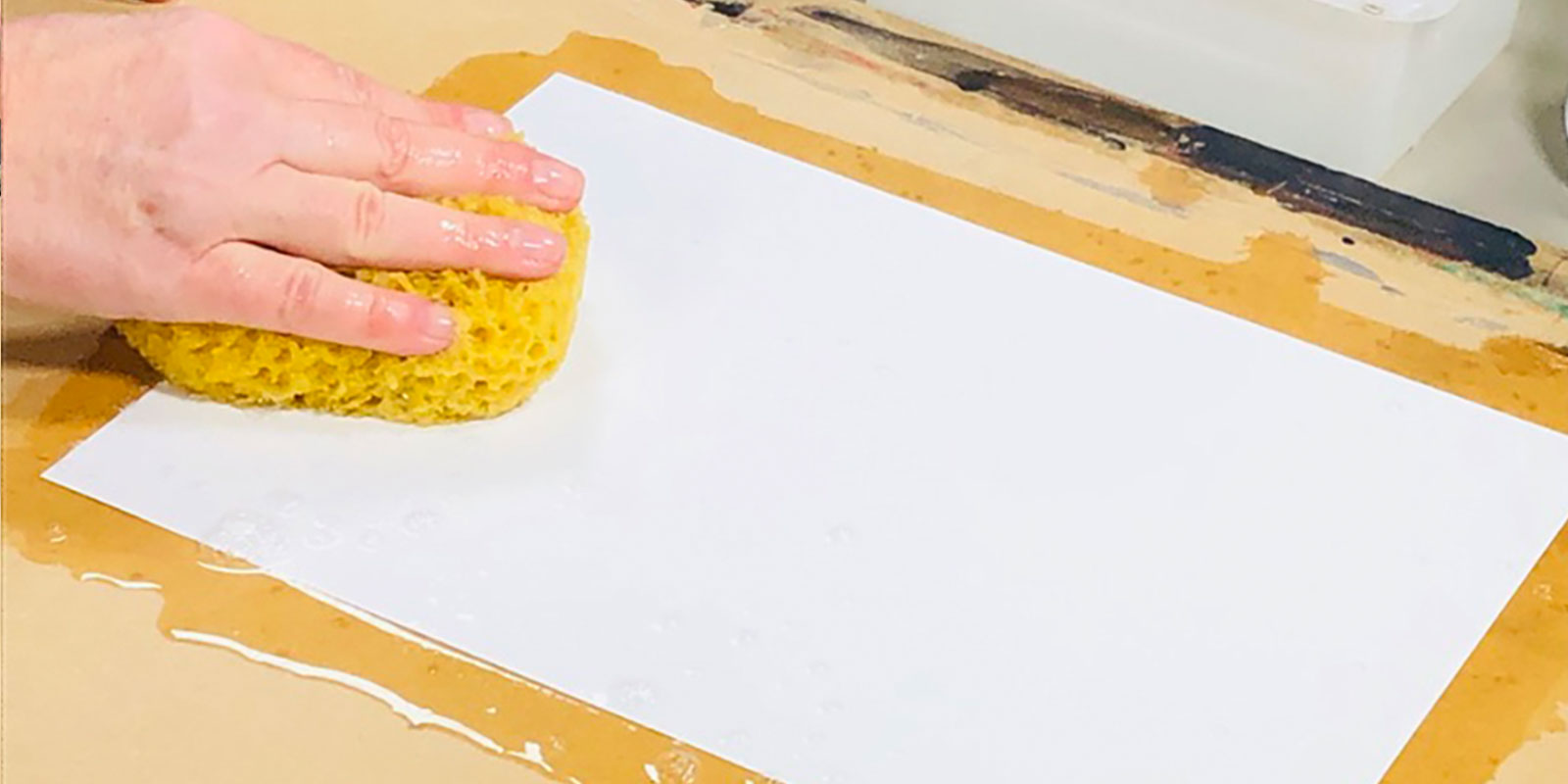






Let your artwork dry completely before removal.
Using a metal ruler as a guide, and a sharp knife, score the edge of your paper where it meets the board on all four sides. You do not need to exert too much force.
Once the gummed paper strip has been scored, you can place your knife just under the paper’s edge lifting the paper off the board and cutting the tape in places that may still be attached.
You can then guillotine the gum strip off your work or leave it on. (however some gummed paper strips may not be archival).
The gum strip left on your board should be soaked off, a wall-paper stripper knife is good for this job.
Wash all glue residue off your board as the next piece of paper you stretch may be bigger than the last and could stick to the board causing it to tear.
This method would be better suited to watercolour paper where you wish to retain the deckle edge.

Watercolour paper you may need to stretch if using heavy wash, wet on wet and scraping techniques
Bockingford Mixed Glued pads x12 sheets of Bockingford 300gsm/140lb watercolour paper. A4 and A3.
Alternative to stretching watercolour paper.
An alternative to stretching watercolour paper is ‘watercolour board’. This is watercolour paper laminated to a board similar to mount board. Similarly, watercolour canvas boards do not need stretching.
Also, some watercolour paper can be bought in a block or glued pad. This means either 2 sides or four sides are glued together so the paper remains stretched whilst painting, preventing cockling. However some of the lighter-weight papers in a block still do move slightly.
Watercolour paper Blocks;
No stretch - Watercolour boards.
I have had a strong interest in the visual and creative arts since a very early age. After completing an Art and Design Degree and Post graduate studies I have taught Art and Design, Fashion and Textiles, Textile design , Fine Art print and Illustration for over 20 years. Before teaching I was a freelance artist and illustrator and decided 4 years ago I would return to freelance and commissioned work. I have created many domestic and commercial murals for hospitals and hospices. I work part time for ARTdiscount as a content creator and product tester.
May 31, 2023
H, Ellie, Is stretching watercolour paper always necessary or does it depend on certain factors, such as paper thickness or size?
Btw. I’m also writing about watercolor painting on my blog: https://www.watercolorhub.com/ – would appreciate your feedback on it :)
Comments will be approved before showing up.
by Joseph Short May 08, 2024
by Izzy Latimer April 24, 2024
by Ellie Jakeman April 18, 2024
MEEDEN is a company known for providing high-quality art supplies and tools to artists and enthusiasts. They are committed to inspiring creativity and supporting artistic endeavours through their range of products, which include Easels, Artist Supplies storage drawers, Table Easels, and Artists’ Print rack with castors.
Sign up to get the latest on sales, new releases and more …
Ellie Jakeman
May 31, 2023
Hi Tomas, yes you are correct, not all watercolour paper needs stretching. As a rule the thicker and heavier weight watercolour paper and watercolour blocks may not need stretching. It would be a good idea to stretch your paper if you were using a lot of wet on wet techniques, however if you work with mostly a dry brush on a heavier paper it may not be necessary to stretch your paper.
I had a look at your blog and it is very comprehensive with some great articles.